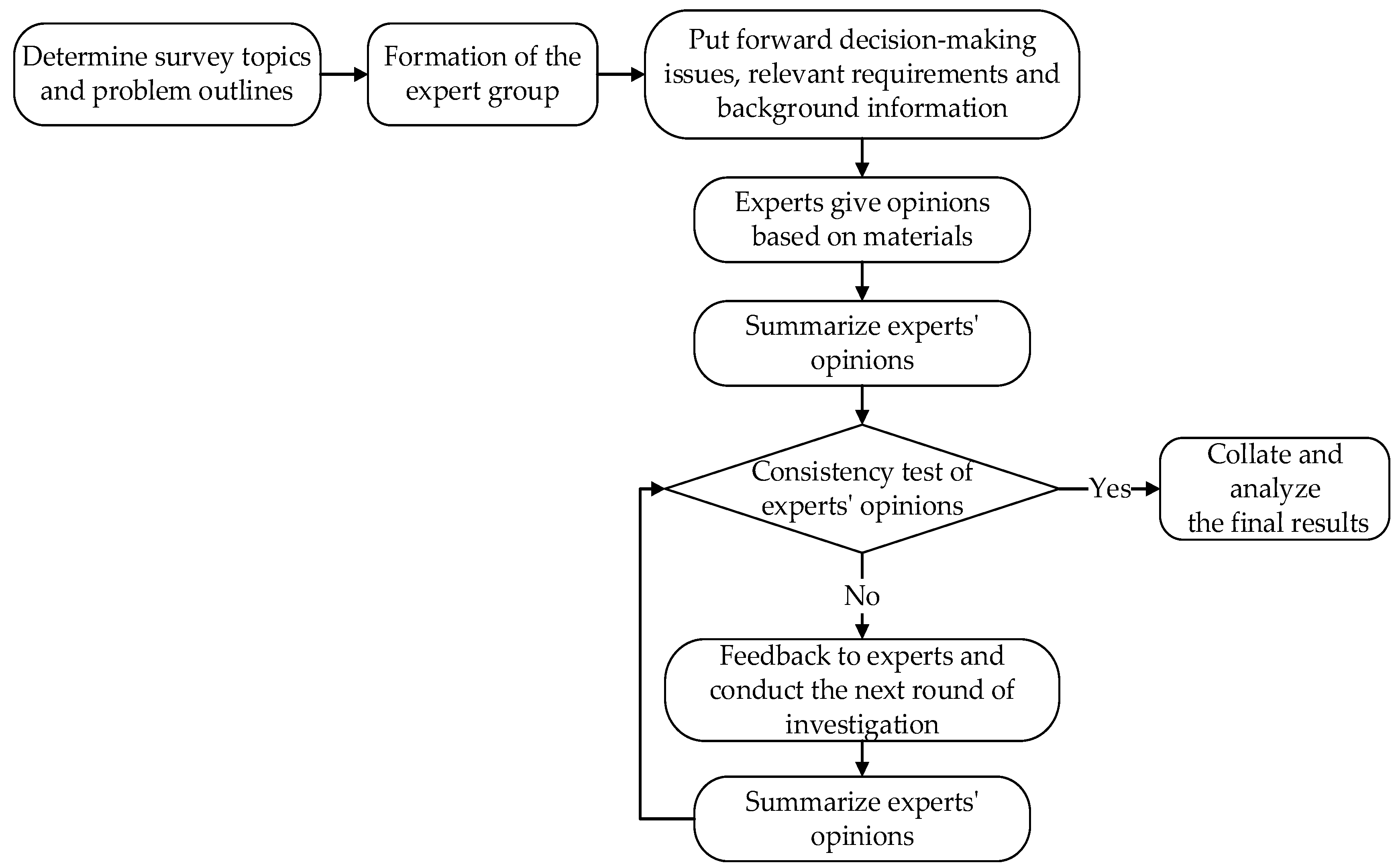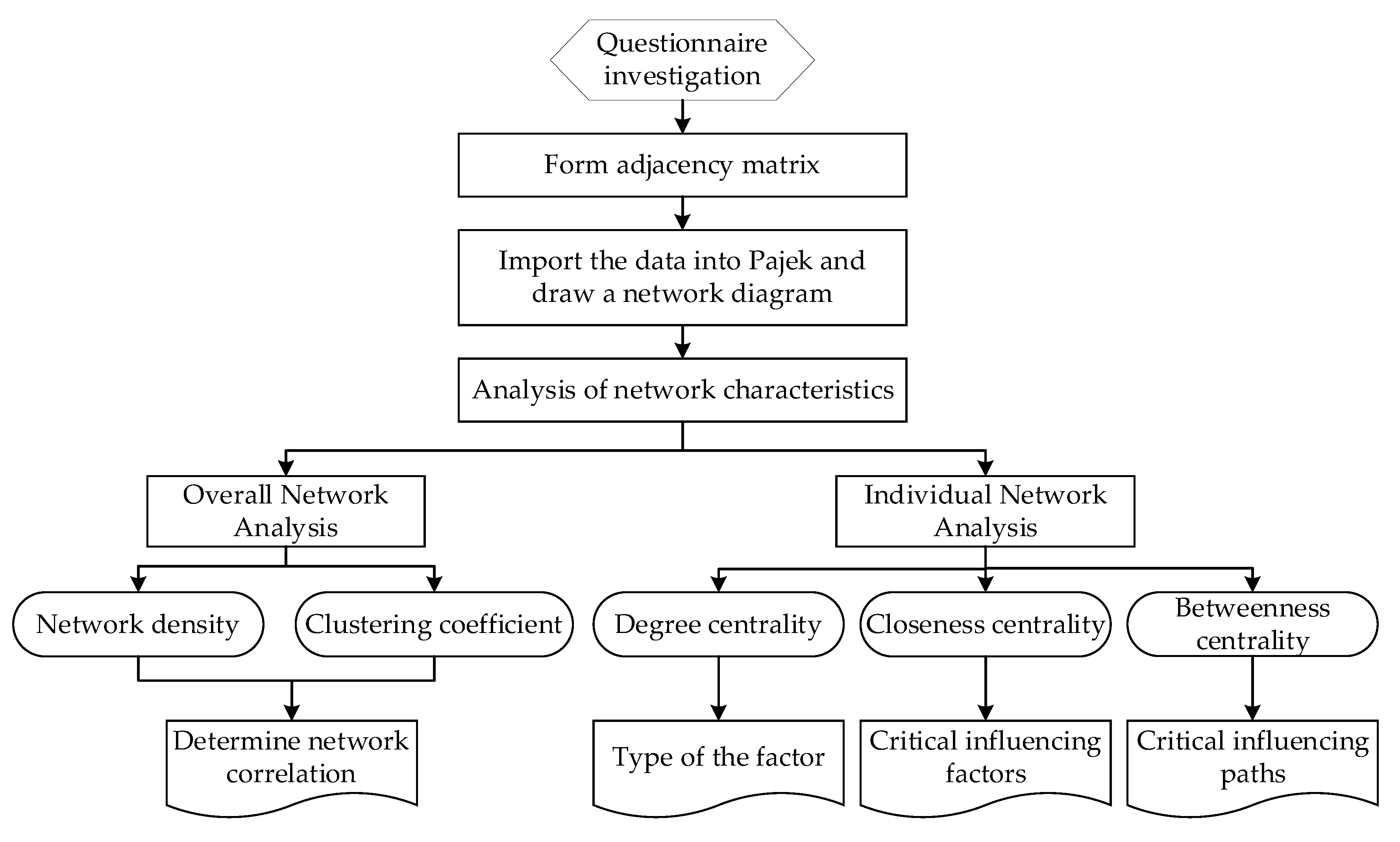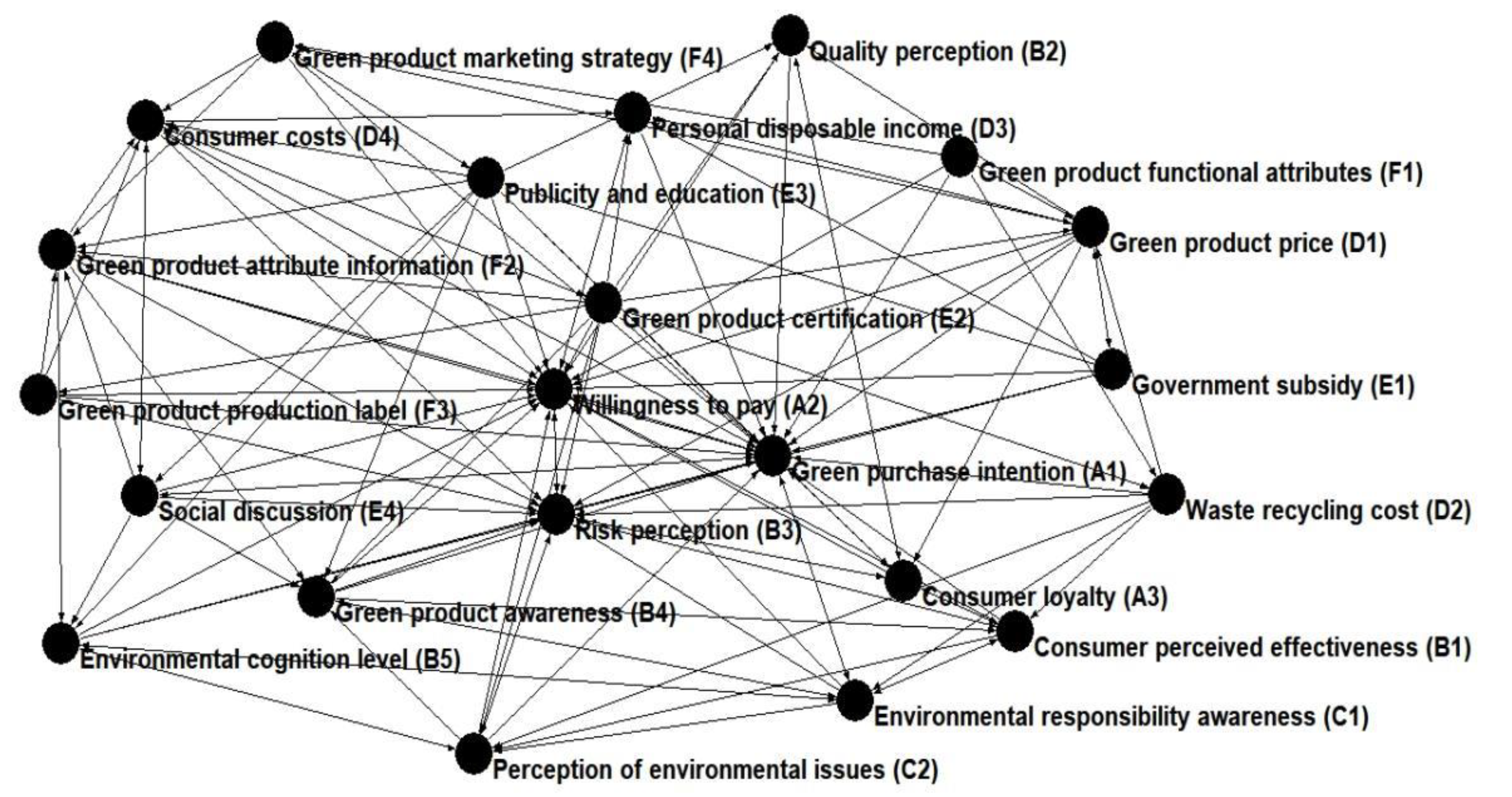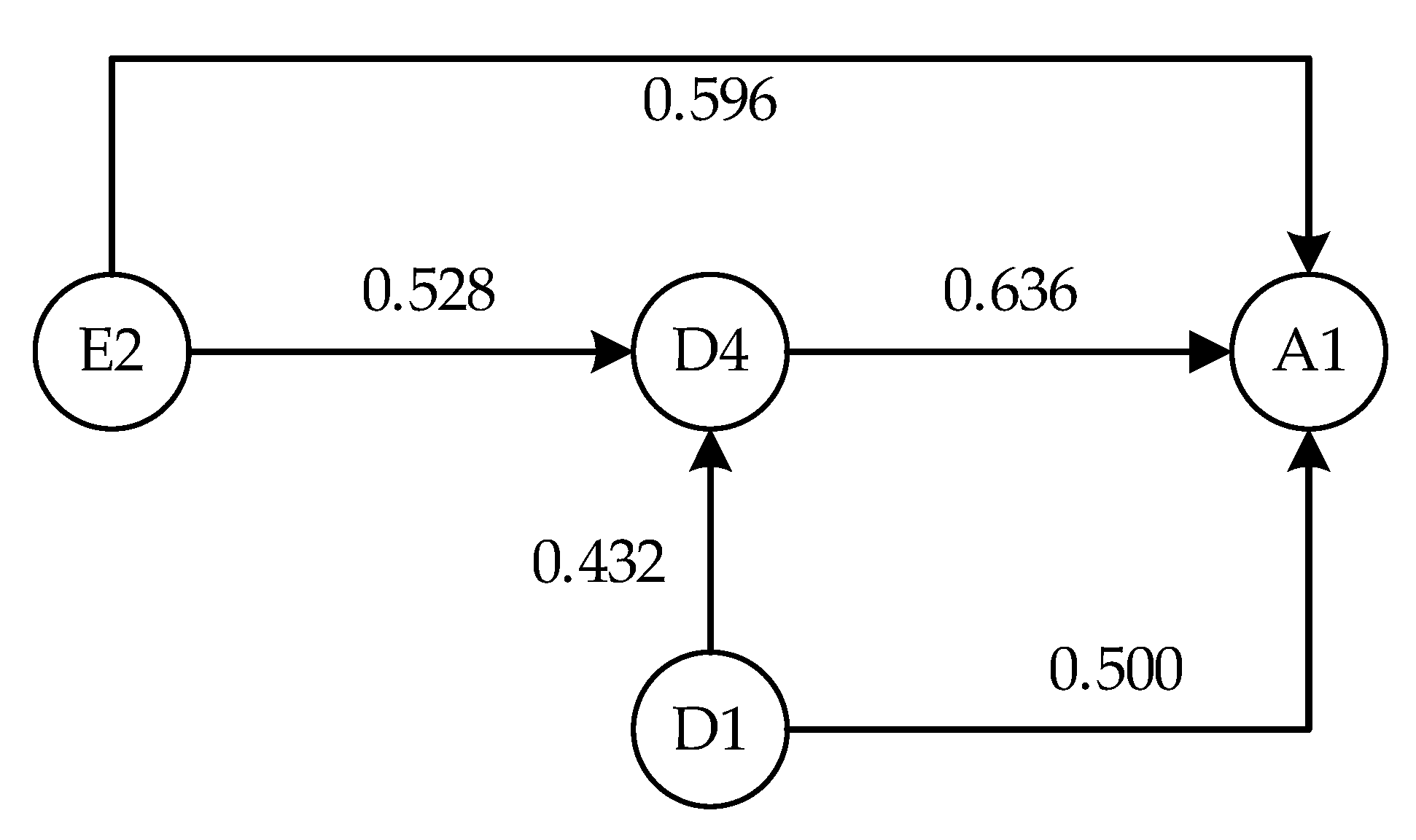1. Introduction
With the rapid development of the economy and the improvement in people’s living standards, the quality of residents’ consumption demand is constantly improving, which at the same time brings a series of environmental problems such as resource consumption, environmental pollution, ecological damage, and greenhouse gas emissions [
1]. Previous studies have shown that human irrational consumption patterns and habits have caused nearly 40% of environmental pollution and destruction, becoming one of the most serious problems facing humanity [
2,
3,
4,
5]. Therefore, more and more people are realizing the harmful effects of excessive consumption on the environment, and seeking green consumption models has become a topic of widespread concern in various countries around the world [
6]. In recent years, the United Nations’ Sustainable Development Goals Report 2020 has emphasized the necessity of “ensuring sustainable consumption and production patterns”. China has also emphasized the importance of “promoting green development and accelerating the green transformation of development methods” [
7,
8]. With the gradual popularization of the concept of green consumption, promoting green consumption has become a profound transformation in the field of consumption. Green consumption is a specific form of the circular economy in the consumption field, which requires residents’ consumption activities to be conducive to environmental protection, resource utilization, and an overall improvement in human quality. The work of the circular economy should be carried out from a macro perspective to promote the green transformation and upgrading of industries. On the other hand, it is necessary to pay attention to individual behavior from a micro perspective and advocate for residents to widely engage in green and low-carbon lifestyles. How to effectively promote green consumption among residents and leverage the power of consumers to achieve sustainable development goals is an important issue worth exploring in the academic community.
Green consumption, also known as sustainable consumption, is a form of consumption characterized by resource conservation and environmental protection [
9,
10]. Previous studies have suggested that green consumption behavior is influenced by individual values. Scholars hold different views on the impact of altruism in personal values on green consumption. Research has shown that altruism that incorporates altruistic and biospheric values positively influences consumers’ pro-environmental behavior [
11,
12,
13]. However, other researchers have studied consumers’ green consumption behavior based on value–belief–normal (VBN) theory, but the research results have not shown the impact of altruistic values on the overall model [
14,
15,
16]. With the improvement in global environmental awareness, positive progress has been made in green consumption work. A previous study has shown that the green consumption structure of urban residents in China has reached a higher level, with a proportion of green consumption reaching 29.75% [
17,
18]. Scholars have also explored green consumption strategies and their impact mechanisms on green consumption behavior (GCB) in the context of “dual carbon”, in order to improve residents’ green consumption levels and promote sustainable economic development [
4,
19]. However, the field of green consumption still faces many problems, such as a weak awareness of green consumption among residents, the attitude–behavior gap in green consumption, and an insufficient effective supply of green products [
18]. At present, scholars’ research in the field of green consumption mainly focuses on green consumption theory, green consumption models, green consumption marketing strategies, and the influencing factors of green consumption. Among them, the field of influencing factors of green consumption is one of the most concerned fields in the academic community [
9]. Green consumption is a complex decision that involves both current and long-term interests, as well as personal and social interests. The complexity of green consumption itself leads to numerous influencing factors [
20]. Therefore, how to identify the critical influencing factors of residents’ GCB and explore the influencing mechanisms between each factor play important roles in effectively guiding green consumption and optimizing the green consumption market [
21].
Traditional theories used for GCB mainly include the theory of planned behavior (TPB) and the attitude–behavior–context (ABC) theory. The former emphasizes the influence of internal psychological factors on GCB, while the latter pays more attention to the role of external context in GCB [
22,
23]. In the TPB model, consumer behavior is influenced by attitude, subjective norm, and perceived behavioral control. This theory has good explanatory and predictive abilities for the psychological decision-making process of goal-oriented behavior [
24]. However, with the in-depth development of research, some scholars have found that TPB is not sufficient to fully explain the complete mechanism of real behavior. This is because this theory does not consider environmental or economic factors that may affect a person’s behavioral intention [
25]. The ABC theory is the main theory that studies the impact of external environment on GCB. This theory believes that the external context is the key to determining whether residents implement green behavior. Previous studies have confirmed that incorporating external context into consumer behavior research can make theoretical models completer and more reasonable [
26,
27]. However, there is currently a lack of systematic understanding of the factors that affect residents’ GCB. Therefore, the TPB-ABC theoretical framework based on TPB theory and ABC theory is an effective model for exploring the influencing factors and decision-making mechanisms of residents’ GCB.
On the basis of constructing the influencing factor system, existing research on identifying the core influencing factors of GCB and analyzing the relationship between factors still needs further deepening. Identifying the critical factors that affect residents’ GCB is beneficial for the government to formulate targeted policies and measures related to green consumption and accelerate the promotion of sustainable development. On the other hand, it is beneficial for residents to strengthen their awareness of green environmental protection and voluntarily implement GCB. The existing research on GCB was mainly based on the hypothesis testing method, and the structural equation model (SEM) was used to verify the rationality of hypotheses. By using this method, it is possible to determine which factors have an impact on promoting GCB. However, our study combines the current research status of GCB and considers exploring the influencing factors of residents’ GCB from the perspective of social network analysis (SNA). This is because the method of SNA cannot only identify the critical influencing factors of GCB, but also more clearly reflect the network relationship between various influencing factors. Furthermore, objective laws of interaction between network nodes can be obtained.
In this study, we explore the answers to the following questions: (1) What dimensions and influencing factors should be considered in studying residents’ GCB? (2) What are the critical influencing factors and how do they interact with each other? (3) What are the critical driving factors and result factors? Additionally, (4) which are the critical influencing paths affecting residents’ GCB? Answering these questions is beneficial to providing effective suggestions for promoting residents’ GCB.
The main contributions of this article are as follows. Firstly, by employing the theoretical framework of TPB-ABC, a comprehensive and reasonable influencing factor index of GCB is formed. The impact mechanisms of consumer attitude, cognitive factors, sense of responsibility, economic factors, government regulation, and green product supply on residents’ GCB are also elucidated. Secondly, based on the data obtained from the survey, the SNA method is used to construct the network diagram. By calculating the degree centrality, closeness centrality, and betweenness centrality of the network, the critical factors and influencing paths that affect residents’ GCB are determined, which can provide guidance for promoting GCB.
The remaining content of this paper is arranged as follows:
Section 2 reviews and sorts out the previous research results on GCB, and summarizes the influencing factor system of GCB.
Section 3 introduces the research method of this study.
Section 4 is the empirical research part, which includes the revision and optimization of the influencing factor system based on the Delphi method, the identification of the critical influencing factors of residents’ GCB based on SNA, and the analysis of the relationship between factors.
Section 5 discusses relevant management suggestions based on empirical research results.
Section 6 is the conclusion.
4. Empirical Study
The influencing factors of residents’ GCB form an overall network. The influencing factors constitute the nodes in the network, and the interaction between nodes forms the paths in the network. These relationship pathways play a crucial role in studying the overall influencing factor network. Firstly, we used the Delphi method to modify and optimize the system of influencing factors of residents’ GCB, and determined the final research framework. Then, we conducted network feature analysis on the influencing factors network of residents’ green consumption based on SNA. The identification of the critical influencing factors of GCB was divided into overall network analysis and individual network analysis. Among them, the overall network analysis included the construction of the overall influence network and the calculation of the overall network density and clustering coefficient. Individual network analysis included degree centrality analysis, closeness centrality analysis, and the identification of critical influencing paths [
59].
4.1. Determination of the Formal Influencing Factor Framework Based on Delphi Method
Through the literature review, the initial set of influencing factors on residents’ GCB summarized in this article included six dimensions and 32 indicators, as shown in
Table 1. In order to verify the scientificity and effectiveness of the influencing factor system, it was necessary to use the Delphi method to consult experts on the initial influencing factor system. Six experts, with rich practical experience and theoretical backgrounds in the field of green consumption, were selected, as shown in
Table 2. We used the points between 0 and 10 to measure the interaction between various factors in the influencing factor system of residents’ GCB.
Then, the necessity of influencing factors was judged based on the average score and the consensus deviation index (CDI) [
60]. The specific calculation formula was as follows:
In Equation (5), represents the expert’s rating of the necessity of each influencing factor, n represents the number of experts, σ indicates the standard deviation of the experts’ scores, and μ represents the average of the experts’ scores.
The judgment rules for using the Delphi to correct the influencing factor system are as follows: Firstly, the average score of each influencing factor is considered. If the average score is lower than the threshold, it indicates that the necessity of the influencing factor is low and needs to be removed from the factor set. Then, the coefficient of variation for each influencing factor is considered. If the CDI value is too high, it indicates that experts have a significant disagreement on the necessity of this factor, and there is no consensus on expert opinions. The next round of the Delphi questionnaires is required until the experts reach a consensus on all factors. In our study, we set 6 as the critical value for necessity and 0.2 as the critical value for CDI. A panel of six experts and scholars from the field of green consumption was invited to rate the necessity of various influencing factors on GCB.
When conducting the first round of the Delphi questionnaires, we provided the expert group with information on the problems to be solved, as well as the initial influencing factor system of GCB determined via a literature review. Based on their own experience, the experts determined whether the initial set of influencing factors could be effectively used to study residents’ GCB, and checked whether the definitions of each influencing factor were accurate and reasonable. Ultimately, based on expert opinions, the “environmental values” and “individual sense of responsibility” of the sense of responsibility dimension were unified into “environmental responsibility awareness”. The “green product performance” and “green product quality” in the dimension of green product supply were uniformly measured using the factor of “green product functional attributes”. The “group reference effect” in government regulation was changed to “social discussion”. After the first round of Delphi, we obtained a system of influencing factors on residents’ GCB, which included six dimensions and 30 influencing factors.
In the second round of the Delphi questionnaire, experts scored the necessity of various influencing factors in residents’ GCB in a back-to-back manner based on scores between 0 and 10. A score of 0 indicated that the influencing factor was completely unnecessary, while a score of 10 indicated that the influencing factor was very necessary. The necessity analysis of factors in the second round of the Delphi questionnaire is shown in
Table 3. The experts unanimously believed that the three influencing factors of consumer satisfaction, convenience of product recycling, and socio-economic development were unnecessary and could be directly removed, because the average scores of these factors were below 6 and the CDI values were below 0.2. In addition, the average scores of 16 influencing factors were higher than 6, indicating that these influencing factors were necessary in the study of residents’ GCB. Moreover, the CDI values of these factors were below 0.2, indicating that the experts reached a consensus on these indicators. The CDI values of the other 11 influencing factors were higher than 0.2. In order for the experts to reach a consensus, the third round of the Delphi questionnaire survey was conducted.
Before the start of the third round of the Delphi questionnaire survey, in order to avoid errors caused by unnecessary factors, experts who scored outside the average value (plus or minus one standard deviation) in the previous round were required to provide the reasons for the second round of scoring. The third round of expert scoring is shown in
Table 4. After the statistical analysis of the questionnaire survey results, it was found that the CDI values of all of the influencing factors were less than 0.2, indicating that all indicators passed the consensus test of expert opinions. Among them, the average scores of five influencing factors, namely transformation of consumption habit, quality perception, environmental benefits, policies and regulations, and green product brand, were lower than 6. According to the principle of determining the necessity of influencing factors, these five factors that were unanimously deemed to be unnecessary by experts were ultimately eliminated.
After three rounds of the Delphi questionnaire surveys, the formal research framework of our study was finally obtained. The final influencing factor system of residents’ GCB included six dimensions and 22 factors, as shown in
Table 5.
4.2. Identification and Analysis of Critical Influencing Factors Based on SNA
4.2.1. Construction of the Network Diagram of the Influencing Factors
We conducted research on the identification of critical influencing factors in residents’ GCB based on the method of SNA. According to the analysis of existing research on the influencing factors of GCB, we finally sorted out six dimensions and 22 factors, which were used to identify the critical influencing factors and critical influencing paths of GCB. In terms of data acquisition, having determined the set of influencing factors on residents’ GCB, we used expert questionnaire surveys to determine the impact of pairwise comparisons between factors. The questionnaire was designed as a paired comparison question, with scores from 0 to 10, where 0 represents no impact between two factors. The scores from 1 to 10 indicate that factor
i has an impact on factor
j, and the larger the score, the higher the degree of influence between factors. The questionnaire was filled out by experts and scholars from the field of green consumption, as shown in
Table 2. The question was as to “Whether there is a correlation between residents’ green purchase intention and willingness to pay. What is the impact of residents’ green purchase intention on green product awareness?” Part of the questionnaire is shown in
Table A1 in
Appendix A.
When processing the data, we treated the opinions of each expert equally. The average scores calculated by the experts were used as the final impact between factors. We set the average value below 0.5 as 0 and believed that there was no impact between these two factors. The adjacency matrix of the influencing factors of residents’ GCB was obtained. Since the matrix of 22 × 22 involved more data, only the adjacency matrix among the first 10 influencing factors was given as an example, as shown in
Table 6.
Based on the adjacency matrix of the influencing factors, we used Pajek to construct the initial network, as shown in
Figure 3.
4.2.2. Identification of the Critical Influencing Factors
We conducted an overall network analysis to determine the degree of network correlation. According to Equations (1) and (2), the overall network density and clustering coefficient were calculated, and the results were 0.533 and 0.432, respectively. This indicated that the relationship between various factors in the entire network was relatively close. Additionally, these factors all played an important role in the relationship network of factors affecting residents’ GCB. This result also indicated that the influencing factors of residents’ GCB were the combined effect of internal factors (consumer attitudes, cognitive factors, sense of responsibility) and external contexts (economic factors, government regulation, green product supply). These factors had varying degrees of impact on green consumption behavior, but for most of the residents, each of them had its own role and was indispensable.
Then, we conducted individual network analysis to identify the critical influencing factors and critical influencing pathways. According to Step 4 of SNA, we calculated the degree centrality and closeness centrality of the network for individual network analysis. The critical influencing factors of residents’ GCB were ultimately determined. The SNA analysis results are shown in
Table 7.
The nodes with relatively high out-degree in the network indicated that the impact of these factors on other factors was strong, and we referred to these factors as driving factors. The nodes with relatively high in-degree indicated that the factors were influenced by other factors strongly, and these factors were named as the result factors. According to the results in
Table 7, the driving factors included green product certification (E2), publicity and education (E3), and green product price (D1), indicating that these factors constituted the direct factors that affected residents’ GCB. The result factors included green purchase intention (A1), willingness to pay (A2), and risk perception (B3). These factors were indirect factors that influenced residents’ GCB, and could be influenced by controlling the driving factors.
According to the ranking results of closeness centrality in
Table 7, we considered the top five factors as critical influencing factors. The critical influencing factors of residents’ GCB included green purchase intention (A1, 1.000), willingness to pay (A2, 0.955), risk perception (B3, 0.808), green product certification (E2, 0.700), publicity and education (E3, 0.677), green product price (D1, 0.677), and green attribute information (F2, 0.677).
The final critical factors influencing residents’ GCB are shown in
Table 8.
4.2.3. Identification of the Critical Influencing Paths
After identifying the critical influencing factors and their types, we further calculated the betweenness centrality of each factor, as shown in
Table 9. We considered factors with betweenness centrality greater than 0.1 as the critical intermediary nodes. It was clear that green purchase intention (A1, 0.352), consumer cost (D4, 0.284), green product certification (E2, 0.244), and green product price (D1, 0.148) were the critical intermediary nodes.
We further calculated the betweenness centrality of each edge between the critical intermediary nodes. According to the edge betweenness centrality, we considered the top five influencing paths as the critical influencing paths. The results are shown in
Table 10.
In order to further explore the internal correlation of the critical influencing paths, a network diagram was drawn as shown in
Figure 4.
As shown in
Figure 4, green product certification (E2) and green product price (D1) were critical driving factors. As for green product certification, it cannot only directly affect residents’ green purchase intention (E2→A1), but also indirectly affect green purchase intention by influencing consumer costs (E2→D4→A1). As for green product price, it cannot only directly affect residents’ green purchase intention (D1→A1), but also indirectly affect green purchase intention by influencing consumer costs (D1→D4→A1). Consumer costs was a critical intermediary node in the network.
6. Conclusions
To effectively promote residents’ GCB, this study identified the critical influencing factors and critical influencing paths using the SNA method.
Firstly, an initial influencing factor set was established based on the TBP-ABC framework. Six dimensions affecting green consumption were considered, namely consumer attitude, cognitive factors, sense of responsibility, economic factors, government regulation, and green product supply. Secondly, a formal influencing factor set was determined using the Delphi method, including six dimensions and 22 influencing factors. Thirdly, the network diagram of the influencing factors was constructed. By calculating the out-degree, in-degree, and closeness centrality, the top five critical factors were identified, including green purchase intention, willingness to pay, risk perception, green product certification, publicity and education, green product price, and green attribute information. By calculating the betweenness centrality, five critical influencing paths were determined, including D4→A1, E2→A1, E2→D4, D1→A1, and D1→D4. Finally, some managerial implications were put forward accordingly.
There are some limitations to this study. Although we classified 32 influencing factors into six categories in detail based on existing research results, we were still unable to exhaust all factors and conduct a thorough investigation one by one. The established behavioral decision-making mechanism can only explain the occurrence of GCB from a limited perspective. Moreover, with the innovative development of green consumption and the publication of relevant research, the selection of influencing factors should be further expanded. In addition, the data processing process in this study treated each expert equally, while in reality, the importance of each expert may vary. At the same time, the ambiguity and uncertainty of various indicators were ignored. The identification of the critical influencing factors and influencing paths could contribute to the promotion of residents’ GCB. Hopefully, the limitations mentioned above will be addressed in future research.












